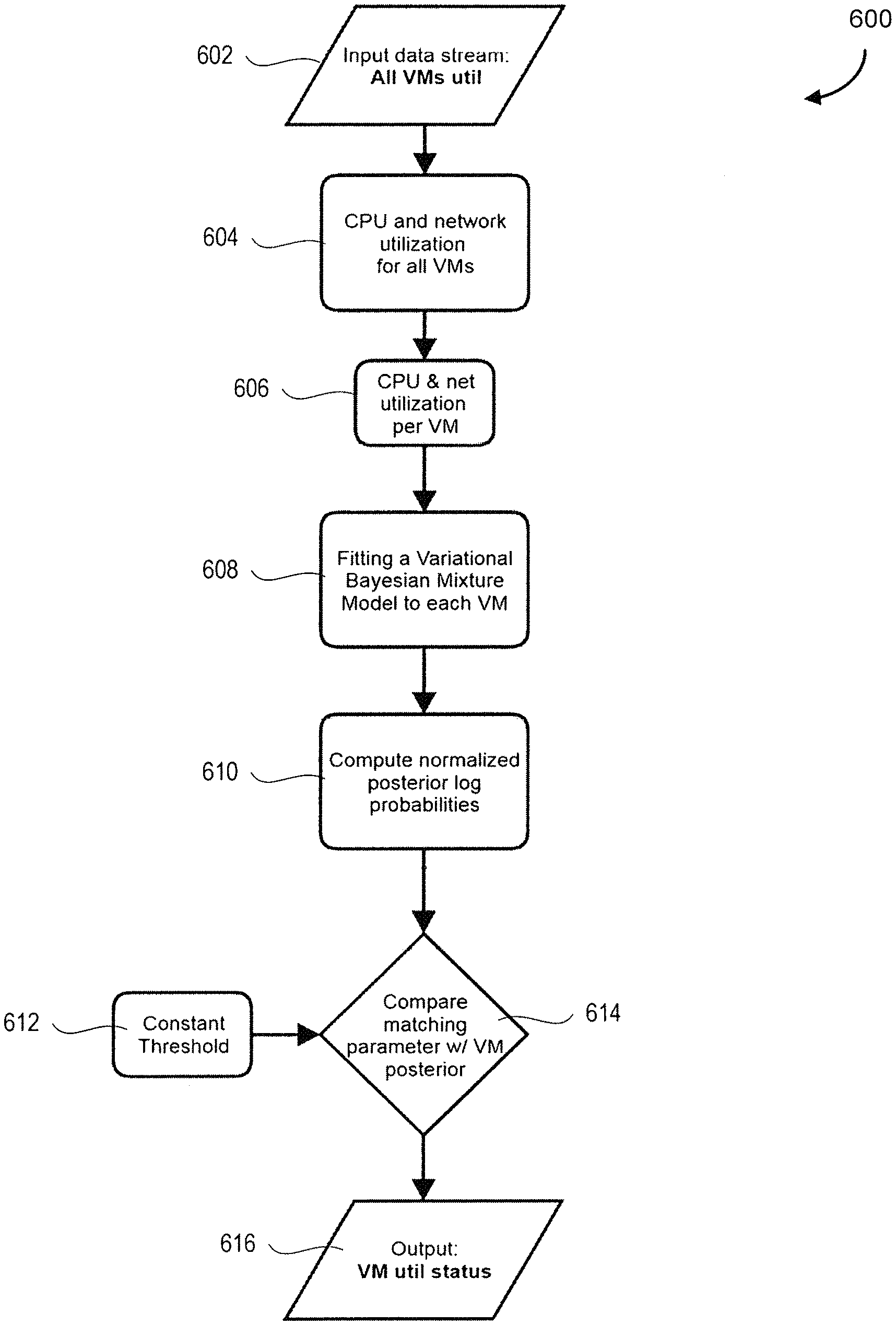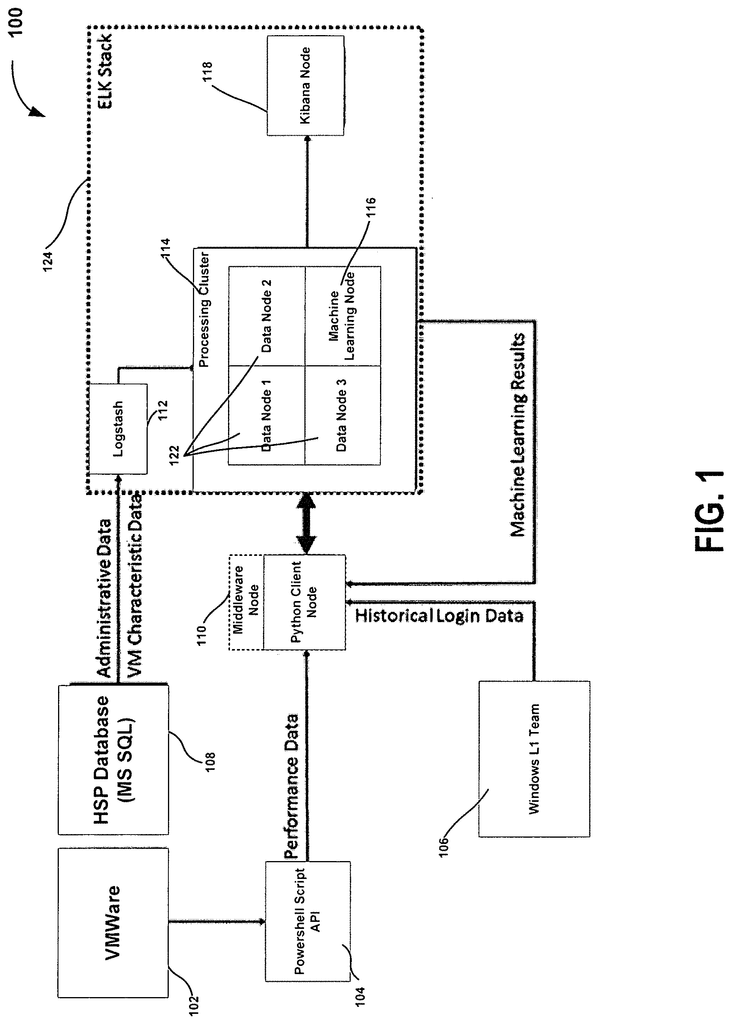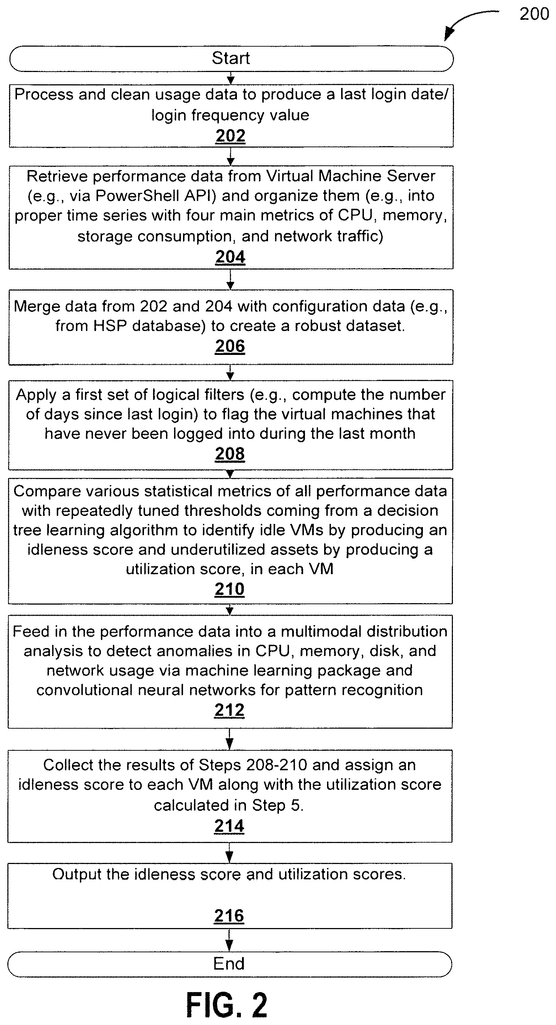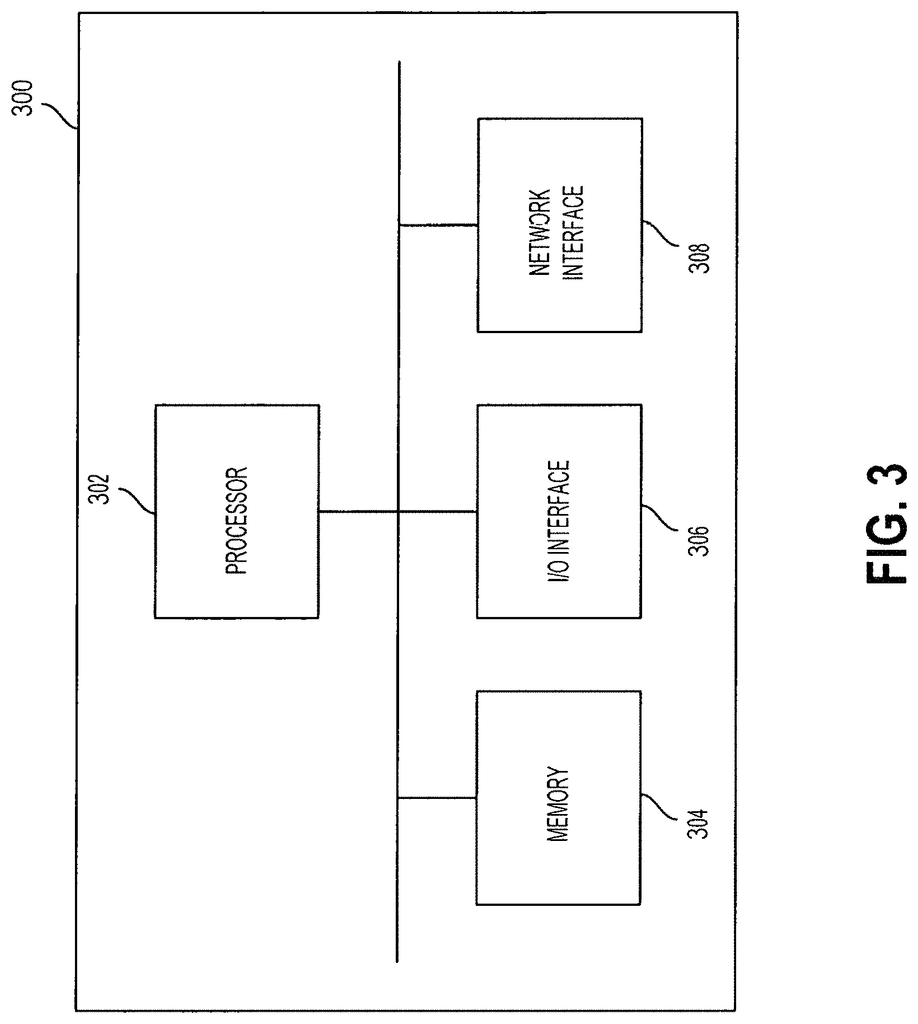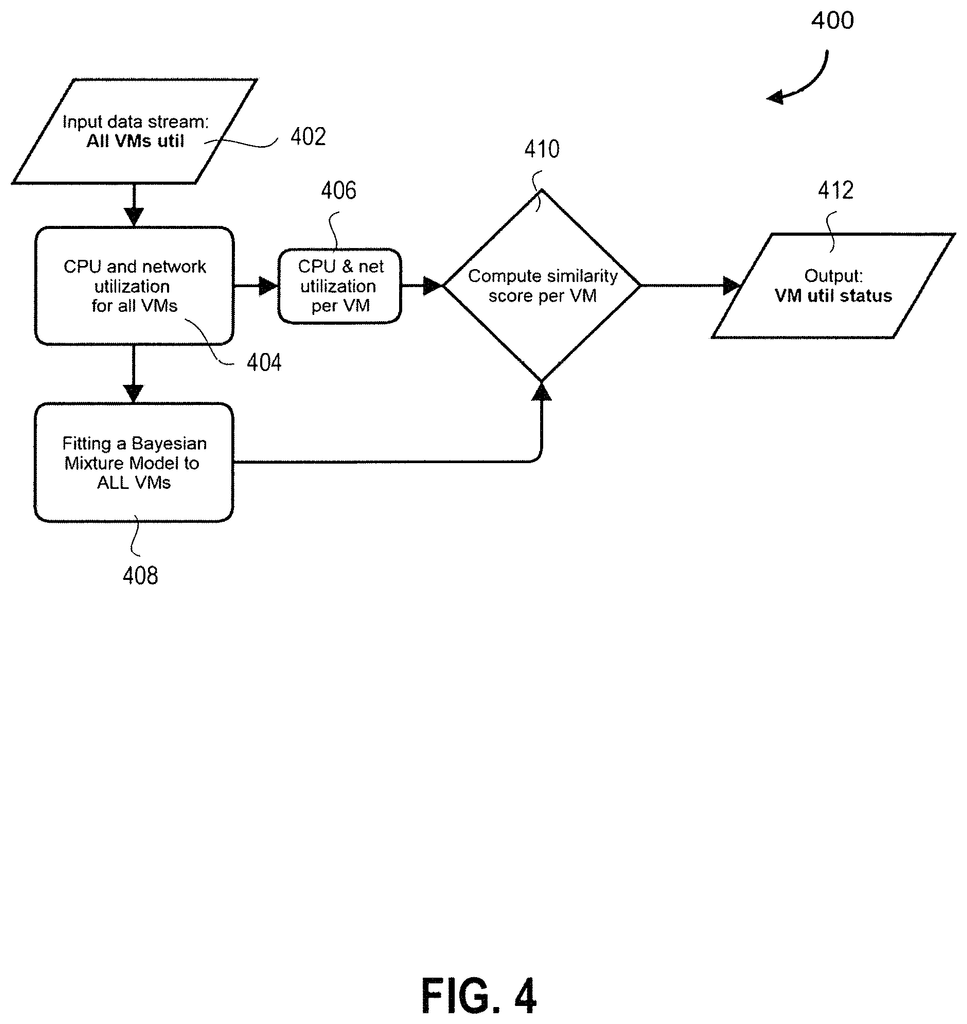Invented by Marat KHANDROS, Amirreza OGHBAEE, Ali Syed, Kamran PIRASTEH, Weitao LIN, Alexander Michael KRUSH, Jacob Alexander ABBOTT, Royal Bank of Canada
In recent years, the use of virtual machines (VMs) has become increasingly popular in various industries. VMs allow users to run multiple operating systems on a single physical machine, maximizing resource utilization and reducing costs. However, one common challenge faced by organizations using VMs is underutilization, where VMs are not fully utilizing the available resources, leading to wasted computing power and increased expenses.
To address this issue, the market for machine learning computing models for virtual machine underutilization detection has emerged. These models leverage advanced algorithms and techniques to analyze VM performance data and identify instances of underutilization. By doing so, organizations can optimize their VM deployments, improve resource allocation, and reduce costs.
The key advantage of using machine learning models for underutilization detection is their ability to analyze vast amounts of data and identify patterns that may not be apparent to human operators. These models can consider multiple factors, such as CPU usage, memory utilization, and network traffic, to determine whether a VM is underutilized. By continuously monitoring VM performance and applying machine learning algorithms, organizations can proactively identify and address underutilization issues, ensuring optimal resource allocation.
The market for machine learning computing models for virtual machine underutilization detection is driven by several factors. Firstly, the increasing adoption of VMs across industries has created a need for efficient resource management. Organizations are looking for ways to maximize the value of their VM deployments and minimize costs. Machine learning models provide a powerful solution to this challenge by automating the detection of underutilization and enabling proactive resource optimization.
Secondly, the growing complexity of VM environments necessitates advanced analytics capabilities. As organizations scale their VM deployments, managing and monitoring performance becomes increasingly challenging. Machine learning models offer a scalable and automated approach to analyze VM performance data, enabling organizations to efficiently detect underutilization across large-scale deployments.
Furthermore, the market for machine learning computing models for virtual machine underutilization detection is fueled by the increasing availability of data and computing power. With the proliferation of IoT devices and the rise of big data, organizations have access to vast amounts of performance data from their VM deployments. Machine learning models can leverage this data to train and improve their detection capabilities, leading to more accurate and reliable underutilization detection.
Several companies have already entered the market, offering machine learning-based solutions for virtual machine underutilization detection. These solutions typically involve the deployment of agents or monitoring tools that collect performance data from VMs and feed it into machine learning algorithms. The algorithms analyze the data in real-time, identifying instances of underutilization and providing actionable insights to optimize resource allocation.
As the market continues to evolve, we can expect further advancements in machine learning computing models for virtual machine underutilization detection. These advancements may include the integration of predictive analytics capabilities to forecast underutilization trends, as well as the incorporation of anomaly detection techniques to identify abnormal VM behavior. Additionally, the market may witness the development of cloud-based solutions that leverage distributed computing power to analyze VM performance data at scale.
In conclusion, the market for machine learning computing models for virtual machine underutilization detection is poised for significant growth. With the increasing adoption of VMs and the need for efficient resource management, organizations are turning to machine learning models to optimize their deployments. By leveraging advanced algorithms and techniques, these models enable proactive underutilization detection, leading to improved resource allocation and cost savings. As the market evolves, we can expect further advancements and innovations in this space, driving the adoption of machine learning-based solutions for virtual machine underutilization detection.
The Royal Bank of Canada invention works as follows
Systems are provided that detect sub-optimal performance on one or more virtual platforms. A plurality of virtual computers hosted on one or several virtual computing platforms are collected with usage data that represents user activity and performance data that represents computing hardware resource use. The usage and performance data are then analyzed, along with configuration data that represents the hardware components of computing devices operating the Virtual Computing Platform.
Background for Machine Learning Computing Model for Virtual Machine Underutilization Detection
The present invention describes computational approaches for distributing a data architecture across a group of computing servers. The computing servers can each host one or multiple computing systems. In particular, when more than one computer system is hosted on one computing server (e.g. a physical server), these computing systems run as virtual machines which are emulations of computing systems.
Accordingly a single computer host server can host a number virtual machines. This is limited by the computing resources that are available on the computer host server. These include, for example: data storage (e.g. hard drive space), random-access memory, and processor cycles. In some cases, virtual machines are managed by hypervisors or supervisory components that can be used to modify the allocation of computing resources amongst the virtual machines. “For example, the operating system of a host server could be used to allocate resources across three virtual machines.
The availability of resources can limit virtual machine performance, e.g. speed and capacity to handle requests. Virtual machines, in particular, are resource-intensive, as they duplicate operating systems and leave many resources un-provisioned or idle (e.g. awaiting requests). Under-utilized virtual machine usage results in higher operating and capital costs. It is therefore desirable to improve the approach used for right-sizing virtual machines. Right-sizing may include identifying virtual machine usage for review or, in some embodiments controlling the hypervisor explicitly to reduce virtual resource allotment, consolidate devices or de-provisioning virtual machines. Right-sizing can also involve increasing the resource allocation of some virtual machines by using reductions in other virtual machines (e.g. memory allocations or physical CPU resources).
A specific improved approach is described in various embodiments that is adapted for improving convergence rates relating to expectation-maximization approaches for machine-learning based classification. A higher convergence rate reduces the computing power and time needed to perform machine-learning classifications. In large computing environments, it is difficult to identify virtual machine usage as idle, underutilized or normal. This is because the use of these virtual machines varies over time. In order to make observations, sensory data that represents the operating or usage characteristics is used. These observations can also be numerous (e.g. hourly observations over several months). The computing resources available to identify a large number virtual machines can limit the accuracy of the identification.
As described in different embodiments, improvements are described which help alleviate technical difficulties with identification by using an improved modelling method and mechanism that could yield a faster convergence of a modeled, while maintaining an acceptable accuracy. Sensory data, such as CPU and memory usages, can then be input by the system, which will output a datastructure showing a ranked list of virtual machines that are either to de-provision or reduce memory allocations. In other embodiments, the hypervisor controller generates signals that control one or multiple hypervisors in order to perform right-sizing, such as deactivating virtual machines or reducing allocations.
The system is designed to detect sub-optimal performance in one or multiple virtual computing platforms. It includes a middleware server that receives usage data, performs a translation, stores the usage in a unified form, and transmits the usage. A database server receives the usage and performance data, in their unified form, from the middleware server and stores the usage and performance in data storage.
According to another aspect, a system comprises an interface that transmits the output from the feature detection engine or scoring engine to the user interface.
The system can also include a classification engine that includes a predictive performance algorithm for generating a future usage score based on a utilization score, usage data, performance data in a unified format and the output from the classification engine.
Accordingly, another aspect of the system comprises the classification engine, further comprising: A machine learning engine that analyzes at least one usage data, performance data, utilization score, classification, or usage data to produce a likelihood that the one or multiple virtual computing platforms at a later date will be configured sub-optimally.
According to another aspect of the invention, the system also comprises the classification node that incorporates at least one machine-learning package and at most one convolutional network capable of providing pattern recognition functionality.
The method includes arranging performance metrics and merging usage data and performance data together with the retrieved configuration to create a combined dataset. It also involves applying at least one logic filter to this combined dataset.
According to another aspect, “the method also comprises”: transmitting one of more usage data, utilization score, and idleness score, to an user interface.
According to another aspect, performance data includes at least one of the following: CPU usage data; memory usage data; storage consumption data; and network traffic data.
The usage data may include at least one of the following: user login data, history of executed processes, or owner data.
The method of another aspect comprises the following: producing a score for future usage based on the utilization score, performance data, usage data and output from the classification engine in a unified format; storing this score in memory; and transmitting it to the user interface.
The disclosure also provides logic structures, such as machine-executable instructions sets, for implementing these systems, devices and methods.
Before describing at least one embodiment, please note that embodiments do not limit themselves to the construction details and the arrangement of components as described in the description or shown in the drawings. It is also important to note that the terminology and phraseology used here are intended for description only and not as a limitation.
After reading the present disclosure, those in the know will see many more features and combinations of them regarding embodiments described.
According to certain embodiments, this system and method discloses processes, methods and systems, as well as computer-readable media, to determine programmatically whether one or several virtual machines deployed by the virtual machine servers are idle or in usage, and whether or not the allocation of computing resources on the virtual machine servers is resulting in an underutilization. “Improving the efficiency of virtual machine deployments and their usage rate is a key technical consideration for improving data center efficiency.
Virtual machine servers, also known as virtual computing platform, are equipped with management tools that allow administrators to increase or decrease the resources allocated to virtual machines. They can also manage the number inbound and outbound connection to and from the virtual machine and perform an automated setup, including operating system, software and hardware configuration. These systems cannot analyze and identify underutilized or suboptimally configured virtual computers, or provide administrators with reports and suggestions for improved configuration schemes.
The embodiments provided herein enable more efficient and efficient allocation of resources and allow administrators or automated systems re-allocate more quickly to maintain efficient allocation.” In some embodiments a data architecture can be used as a distributed computing system to assess virtual machine characteristics. This is done by using data gatherers that harvest operating characteristics from processor load, hard disk conditions, operating temperatures and memory usage (e.g. free memory, file size) over a period of time.
Click here to view the patent on Google Patents.
